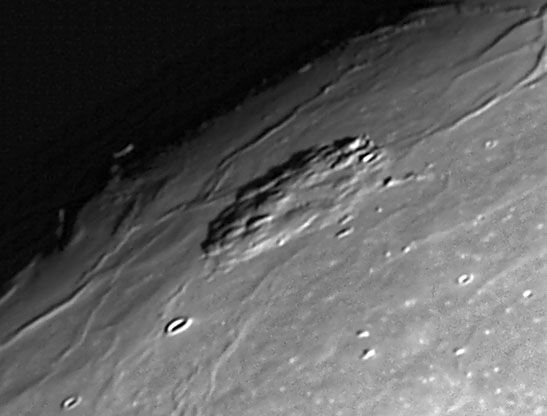Difference between revisions of "December 17, 2004"
| (4 intermediate revisions by the same user not shown) | |||
| Line 1: | Line 1: | ||
__NOTOC__ | __NOTOC__ | ||
=Roris Rump= | =Roris Rump= | ||
| + | <!-- Start of content --> | ||
<table width="85%" border="0" align="center" cellpadding="6" cellspacing="2"> | <table width="85%" border="0" align="center" cellpadding="6" cellspacing="2"> | ||
<tr> | <tr> | ||
| Line 29: | Line 30: | ||
<br>Rukl <i>Atlas of the Moon,</i> Sheet 8 | <br>Rukl <i>Atlas of the Moon,</i> Sheet 8 | ||
</p> | </p> | ||
| − | <p | + | <p><b>Yesterday's LPOD:</b> [[December 16, 2004|A Doctor on the Moon]] </p> |
| + | <p><b>Tomorrow's LPOD:</b> [[December 18, 2004|Ho Hum, Plato Again]] </p> | ||
</tr> | </tr> | ||
</table> | </table> | ||
| Line 40: | Line 42: | ||
<p align="center" class="main_titles"><b>Author & Editor:</b><br> | <p align="center" class="main_titles"><b>Author & Editor:</b><br> | ||
[mailto:tychocrater@yahoo.com Charles A. Wood]</p> | [mailto:tychocrater@yahoo.com Charles A. Wood]</p> | ||
| − | < | + | <!-- Cleanup of credits --> |
| − | + | <!-- Cleanup of credits --> | |
| − | < | + | <!-- Cleanup of credits --> |
| − | + | <!-- Cleanup of credits --> | |
| − | + | <!-- Cleanup of credits --> | |
| − | < | + | <!-- Cleanup of credits --> |
| − | < | + | <!-- Cleanup of credits --> |
| − | + | <!-- Cleanup of credits --> | |
| − | < | + | <!-- Cleanup of credits --> |
| − | + | <!-- Cleanup of credits --> | |
</td></tr> | </td></tr> | ||
</table> | </table> | ||
<p> </p> | <p> </p> | ||
| − | ---- | + | <!-- End of content --> |
| − | + | {{wiki/ArticleFooter}} | |
| − | |||
Latest revision as of 14:05, 15 March 2015
Roris Rump
Image Credit: Paolo Lazzarotti |
|
Roris Rump Is Rumker a unique feature, or just the largest dome on the Moon? Its large size (70 km) and complex - pimpled - topography suggests that it is at least different in scale from classical domes. The only comparable lunar bump is the same-sized Gardner Megadome. The origin of the Megadome is uncertain, but Rumker has the same spectral signature as the mare to the west, and is undoubtedly volcanic. The individual little rises on Rumker do look like un-cratered domes, which Lena and others estimate to rise 300-400 m above their bases. Although there seems to be no other topo information, Rumker appears to perhaps be twice as high as these little pimples. As with the Aristarchus Plateau it is difficult to estimate how much of Rumker's overall elevation results from eruptions piling up magma around a vent and how much is uplift. Technical Details: Related Links: Yesterday's LPOD: A Doctor on the Moon Tomorrow's LPOD: Ho Hum, Plato Again |
|
Author & Editor: |
COMMENTS?
Register, Log in, and join in the comments.




